Better Health





















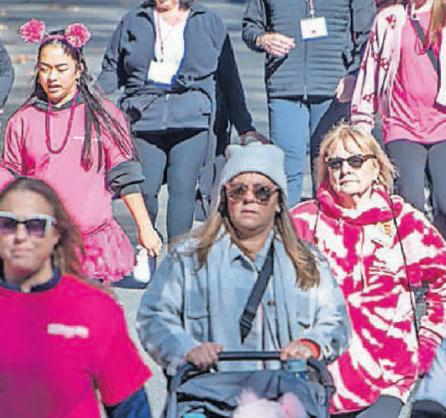
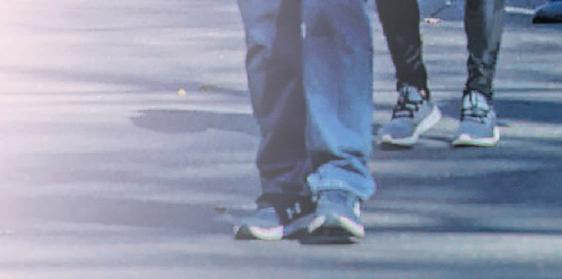
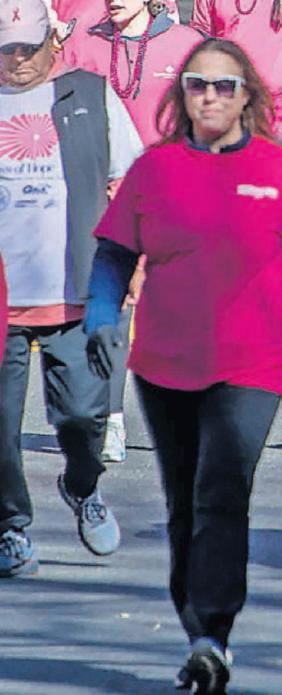
Run SPONSORED CONTENT BY ADVERTISING
On Sunday, October 19, 2025, Springfield’s Forest Park will be transformed into a powerful sea of pink, as Baystate Health Foundation’s annual Rays of Hope Walk & Run Toward the Cure of Breast Cancer returns for its 32nd year. The community-driven event is more than just a fundraiser and has become a cherished tradition of healing, remembrance and resilience that many look forward to each October. The morning is filled with joy, tears, laughter, strength, and—most of all—hope.
Each year, thousands gather to celebrate breast cancer survivors, honor those we’ve lost, and support the ongoing fight against breast cancer. With every step and every stride, participants unite with a singular mission: to fuel hope and fund local breast cancer
tunity to shop the Rays of Hope Store and visit with a variety of local vendors offering resources for survivors.
Whether you’re a first-time participant or a long-time supporter, you’ll quickly realize that the Rays of Hope Walk & Run is not just an athletic event. It’s a full-blown celebration of community, courage, and compassion.
And no one embodies that spirit more than Sandy and John Maybury, the 2024 / 2025 Rays of Hope CoChairs, and living testaments to what Rays of Hope represents.
For Sandy Maybury, Rays of Hope was close to her heart long before her own breast cancer diagnosis. “I walked for many, many years with a group of my girlfriends to support my best friend who is a survivor,” she recalls. But when Sandy herself was diagnosed
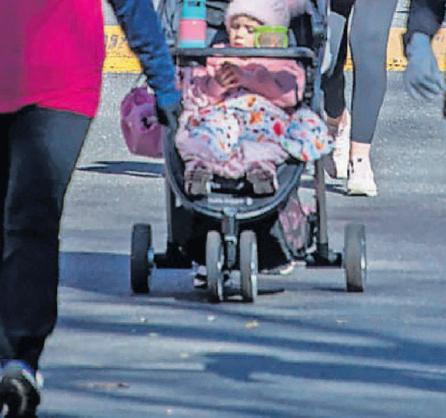


system for survivors. There is always someone there to talk to who understands what you’re going through in a way that goes beyond what you get at the doctor’s office.”
While Rays of Hope supports advancing research happening at the Rays of Hope Center for Breast Cancer Research, the program is also focused on improving the breast health of people in Western Massachusetts. It’s about making today a little easier for someone battling breast cancer, standing beside those in treatment and remembering those we’ve lost while lifting up the families still grieving.
One of the most emotional and meaningful aspects of the day is the Pink Hope Survivors Lounge, a dedicated space for survivors filled with encouragement, resources, and under-
Whether you’re a first-time participant or a long-time supporter, you’ll quickly realize that the Rays of Hope Walk & Run is not just an athletic event. It’s a full-blown celebration of community, courage, and compassion.
research, programs, and survivor support services through Baystate Health’s Rays of Hope initiative.
Every dollar raised through the Rays of Hope Walk & Run stays right here in Western Massachusetts, funding vital breast cancer research, education, and direct support services for patients and survivors. The impact is tangible: research grants, wellness programs, support groups, transportation assistance, and more—all funded by the community, for the community.
This year’s event kicks off with the 8K Run at 8:30 a.m., followed by the Walk Toward the Cure at 10:30 a.m., both starting from the vibrant grounds of Temple Beth El in Springfield. But the excitement begins long before the walk steps off with opening ceremonies, live entertainment, the oppor-
a few years ago, her connection to the cause deepened in unimaginable ways.
Together with her husband, John, the Mayburys have turned their personal journey into a public mission. Through their business, Maybury Material Handling, they’ve rallied friends, employees, and family members to form Team Maybury, a passionate and growing team that proudly walks alongside Sandy and John each year.
The team carries the spirit of Rays of Hope all year long by hosting their annual summer car show to benefit Rays of Hope.
John shares, “Rays of Hope is a very unique organization that Western Massachusetts is very lucky to have.
Not only does it raise money for local research, but it provides a support
standing. Breast cancer survivors are honored with a commemorative survivor t-shirt (available on a first-come, first-served basis) and welcomed with open arms into a community that understands the journey intimately. Inside the tent, Rays of Hope’s Pink Community Partners offer resources and conversations tailored to survivors, no matter where they are in their journey. Featured organizations include the Baystate Breast and Wellness Center, CHD Cancer House of Hope and LIVESTRONG at the Y of Greater Springfield and Greater Westfield. In addition to receiving helpful resources, survivors are also treated to gifts of encouragement from local businesses. Small tokens with big meaning, representing the love and solidarity of the

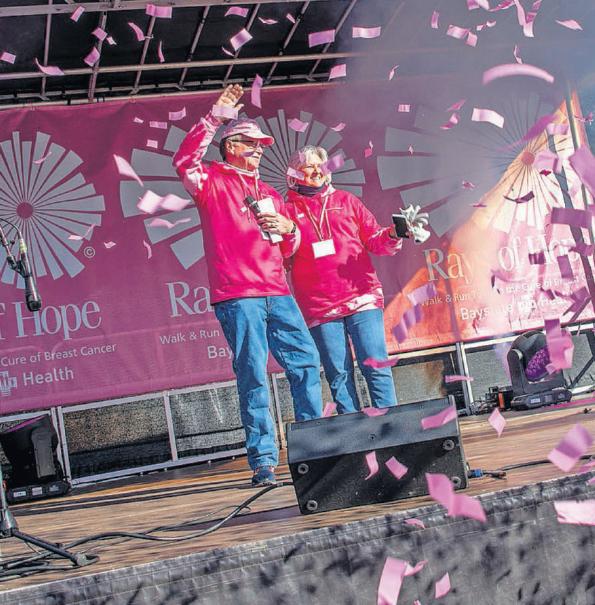
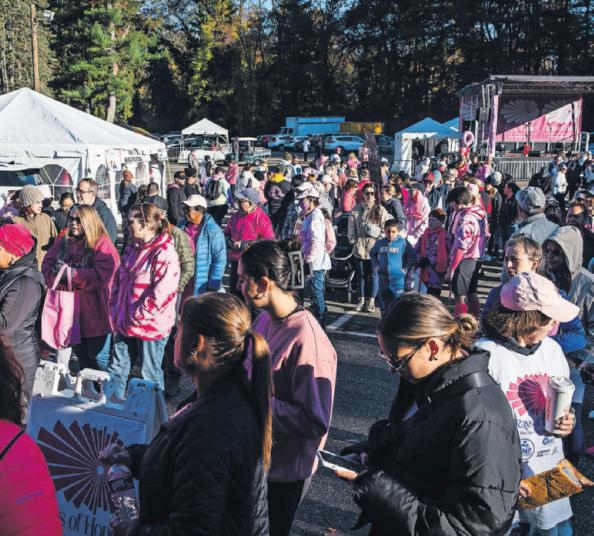
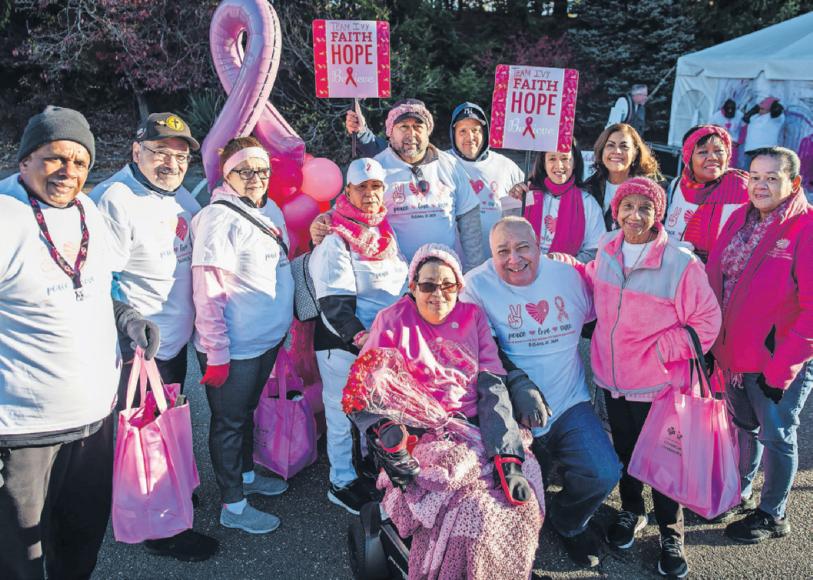
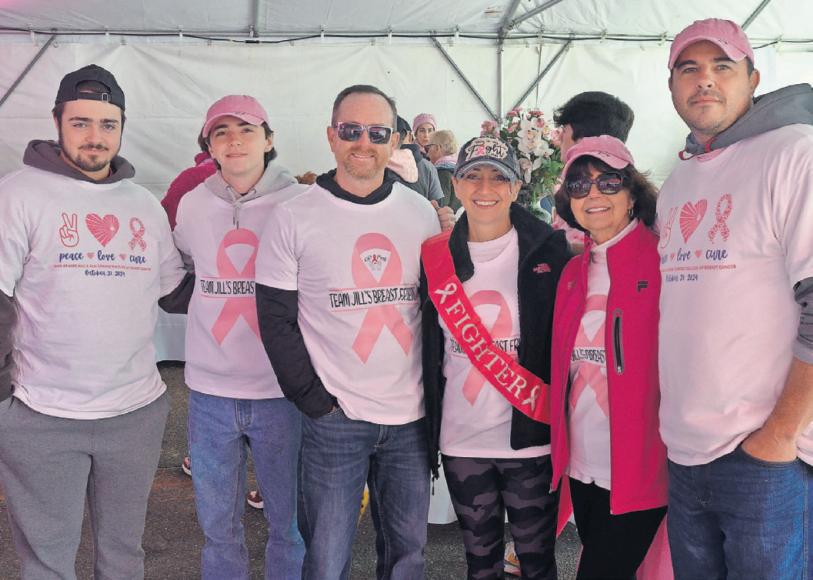
greater Western Massachusetts community.
“To be there [at the walk], it’s truly beautiful,” Sandy echoes John’s sentiment. “There is just a sea of pink at the walk where people are showing their support for their community.” Attending the event allows you to understand what hope looks like; what it sounds like when thousands cheer on a survivor crossing the finish line or when a family holds hands, walking in memory of someone taken too soon.
The energy of the day doesn’t stop at the start or finish lines. The Exhibitor Tent, open to all participants, is a vibrant showcase of local organizations and businesses focused on health, wellness, and survivorship. From the Rays of Hope Center for Breast Cancer Research to dragon boating clubs and tattooing services for mastectomy survivors, the tent is a lively and interactive space designed to uplift and educate.
There’s something deeply moving about seeing local businesses not just participate but pour themselves into the event. It’s not about branding—it’s about community, and the understanding that cancer doesn’t just touch individuals; it affects entire networks of people.
For the Mayburys, hope isn’t a passive feeling; it’s an active force. “The power of thousands of people and the teams that come together… you have to experience it to really understand its impact,” says John. “We ask you to join us at the annual walk & run to show your support of breast cancer survivors and their families.”
How To Participate
Online registration is open until midnight on Friday, October 17, 2025. Visit the Rays of Hope website to register as an individual or form a team. On Sunday, October 19th, in-person registration opens at 7:30 a.m. for runners and 9:00 a.m. for walkers. Parking is available in five remote lots, with shuttles running
throughout the day to and from the main event site.
And while the event is free to participate, fundraising is highly encouraged. Participants who raise at least $50 will receive the official Rays of Hope walk t-shirt. Those who raise $500 or more unlock store coupons, and fundraising heroes who bring in $1,000+ in online donations become part of the exclusive BIG WIG cir cle, earning VIP treatment on walk day.

Whether you walk, run, volunteer, or donate—your presence matters. The Rays of Hope Walk & Run Toward the Cure of Breast Cancer isn’t complete without the people who give it life. It’s your steps, your stories, your support that continue to push the cause forward.

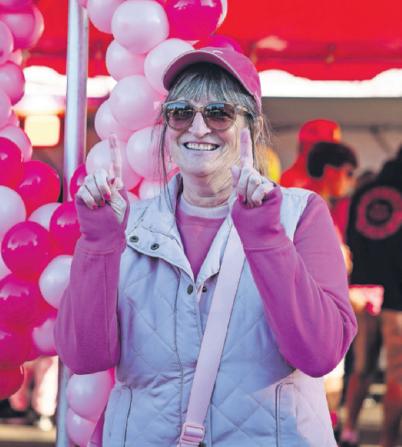
Join us. Be part of the sea of pink. Help us walk toward a world without breast cancer. For more details, to register, or to donate, visit www.baystatehealth.org/ raysofhope today.
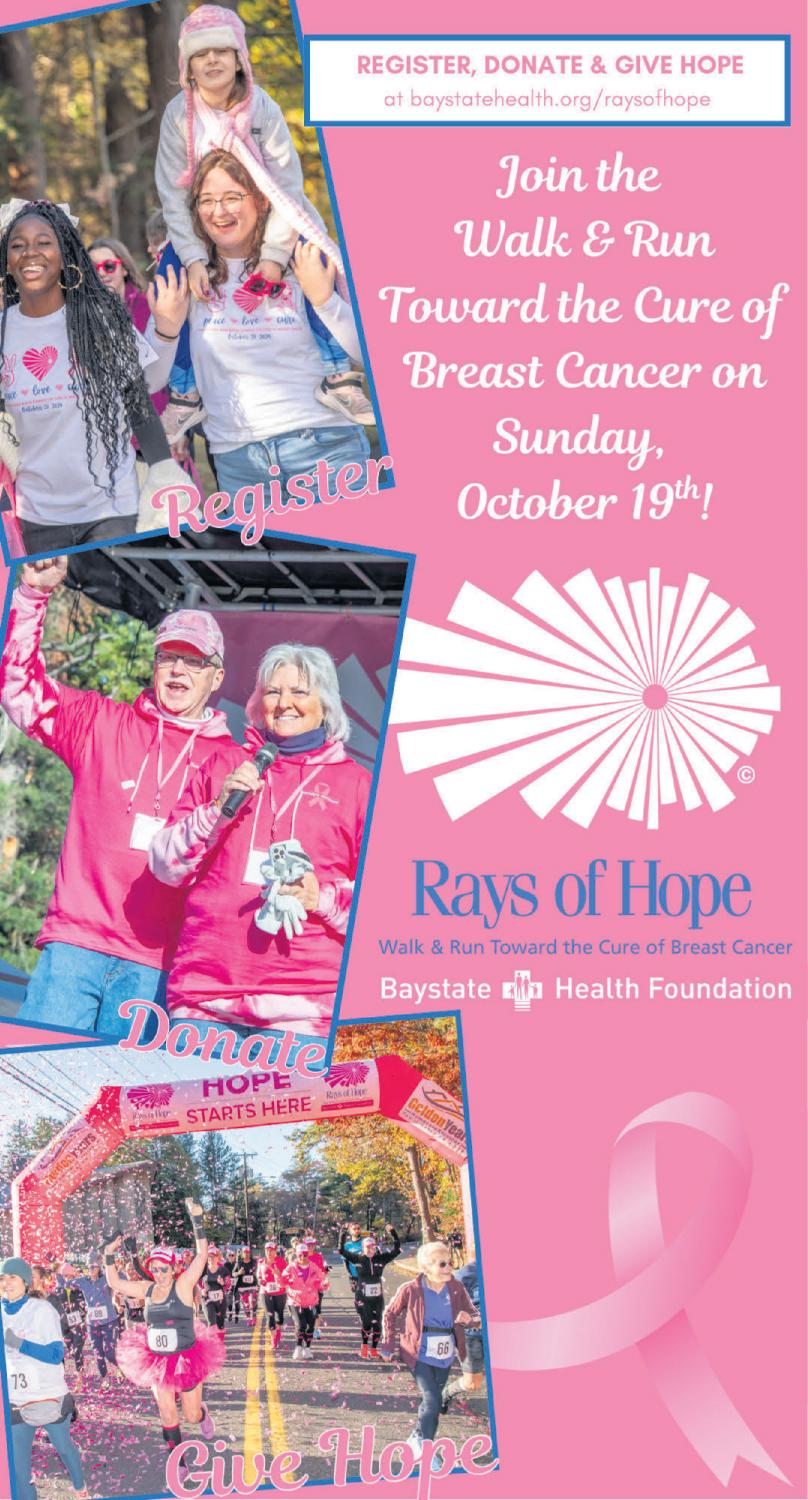

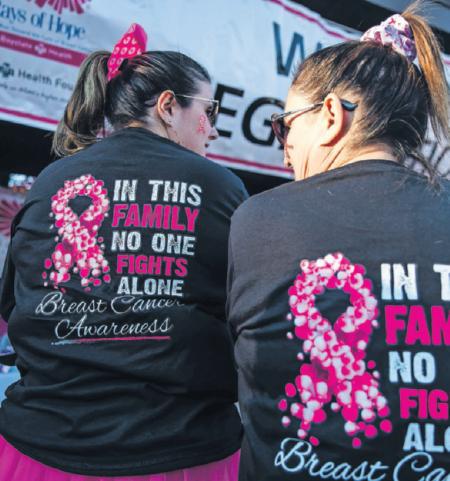
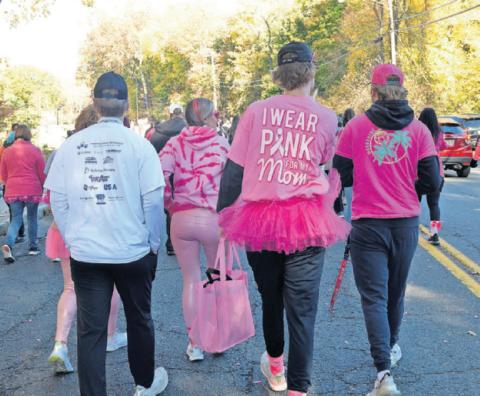



and runners could choose either a two-mile or a five-mile

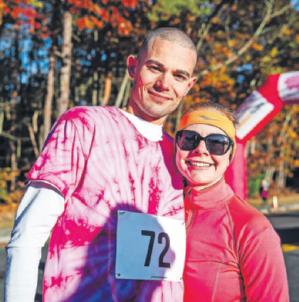

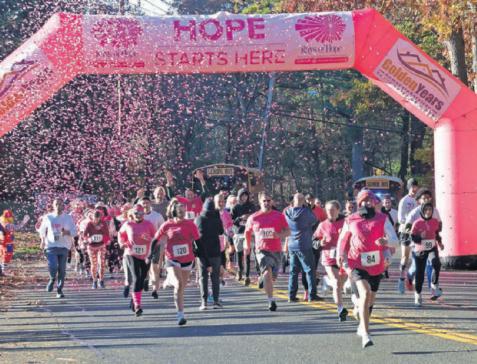
Organizers said at least 20,000 people took part in the 2k walk that followed the road race. (PHOTO

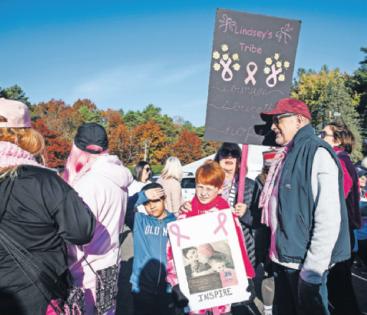
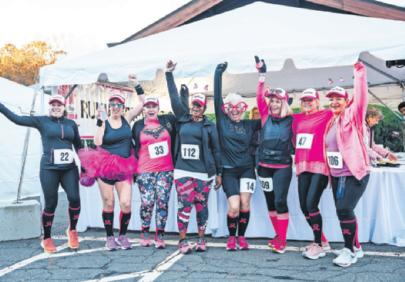


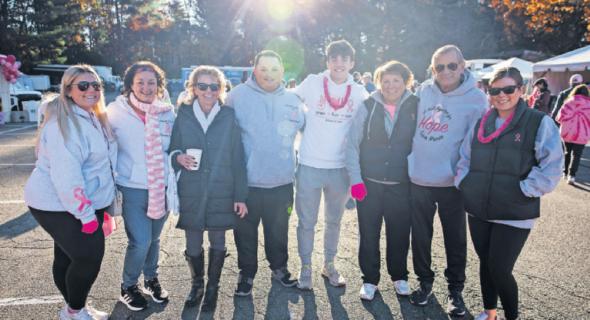
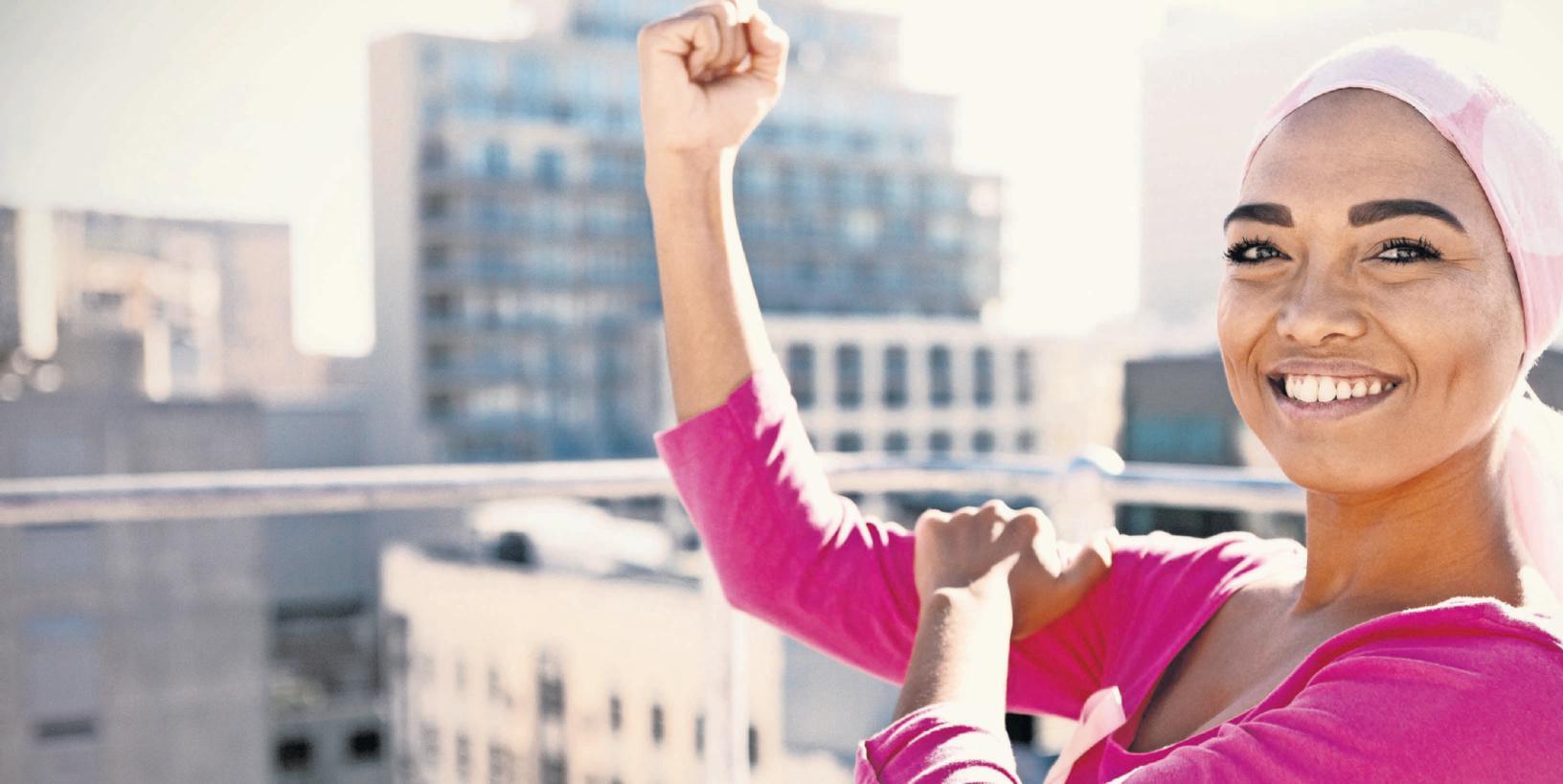

A breast cancer diagnosis can be jarring, and millions of women receive such news across the globe each year.
BreastCancer.org estimates 316,950 women in the United States will be diagnosed with invasive breast cancer in 2025, as well as 59,080 new cases of ductal carcinoma in situ, a non-invasive form of the disease. The Canadian Cancer Society reports approximately 30,500 women are projected to be diagnosed with breast cancer in 2025. After learning they have breast cancer, individuals may not know what to do next.


Certain steps may not take away the initial shock, but can help people prepare for what’s ahead.
Gather information
The first step is to learn more about your diagnosis. This should include details about the type, stage and hormone receptor status of the breast cancer from your doctor. Now is the time to ask the doctor to clarify anything you do not understand. He or she also may begin to spell out a treatment plan. Unless the cancer is very aggressive, you likely have time to seek a second opinion. Another specialist can confirm the diagnosis and offer a second opinion about a potential treatment plan. After all expert opinions are gathered, you also may want to learn more through repu-



table sources like the Mayo Clinic or the American Cancer Society before making any treatment decisions.
Share the news
Some people want to keep their cancer diagnosis a secret, but it can be helpful to let loved ones know early on. This will help you build a strong support system that can offer emotional support and additional assistance when needed. Treatment may leave you feeling weakened and ill, and you might need some helpers to lighten your load. A counselor or therapist also can help you navigate the emotions of a breast cancer diagnosis.
Accept help
It can be difficult for those who are independent to admit they need assistance. You
can take the reins by making a list of tasks or responsibilities that you may need help with. This way when people ask what they can do, you’ll have answers at the ready. Ideas include help with meal preparation, childcare, errands, transportation, or keeping you company during treatments.
Prioritize self-care
Breast cancer can take a lot out of a person. Trying to maintain some sense of normalcy can help. Consider gentle exercise, relaxation techniques and activities that bring a smile to your face. Remember to choose healthy foods and find ways to manage stress as much as possible. Be patient with yourself, as



it can take time to adapt to a diagnosis and treatment.
Speak with your employer
Breast cancer can affect your ability to work. There likely will be appointments with doctors and consultations with your care team. Looping your employer in is a smart idea.
Many supervisors will be supportive of your needs. You also may want to speak with human resources about any services that could be available to you, or how you can allocate personal time off for your treatment and care. A breast cancer diagnosis can catch anyone off guard. Taking each step slowly and learning more can make the weeks ahead a little less apprehensive.
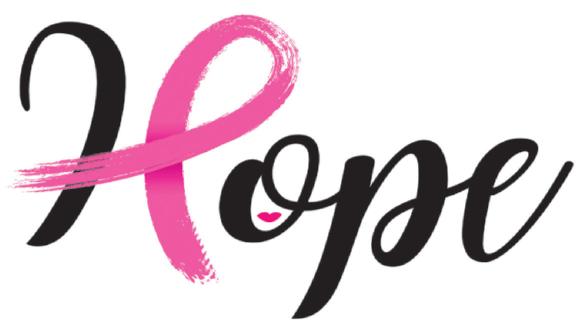






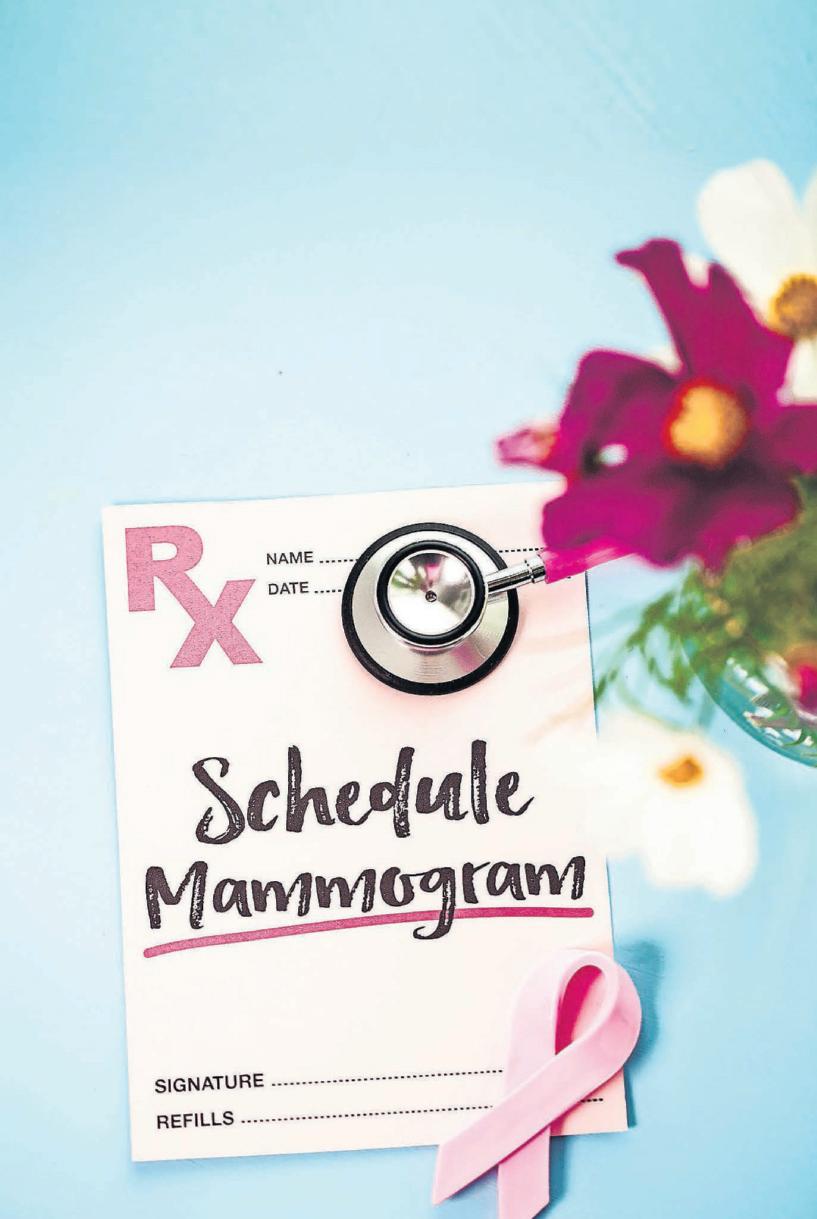
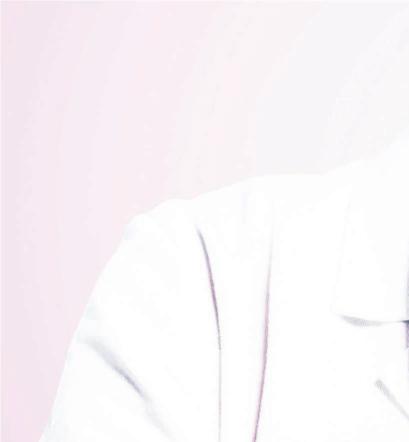
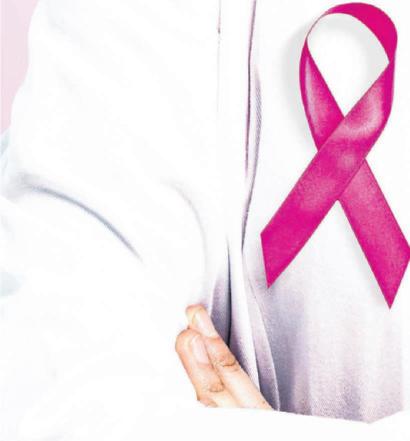

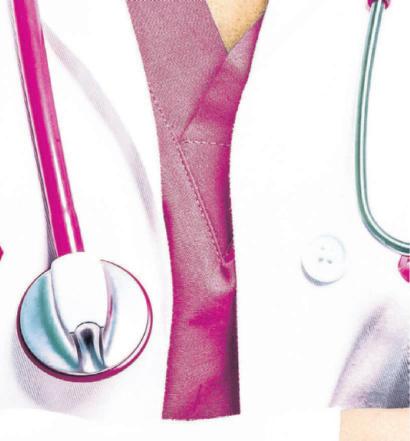

Breast cancer is a formidable disease that affects millions of individuals each year.
Data from the World Health Organization indicates 2.3 million women were diagnosed with breast cancer in 2022, when it was the most common form of the disease in 157 of 185 countries across the globe. The impact of breast cancer goes beyond those diagnosed with the disease, affecting friends, family members, professional colleagues, and others as well. That far-reaching impact means everyone has a vested interest in learning about breast cancer.
What is breast cancer?
The Centers for Disease Control and Prevention notes breast cancer occurs when cells in the breast grow out of control. The breast is made
up of three main parts known as the lobules, ducts and connective tissue, and which type of breast cancer a person has depends on which cells in the breast turn into cancer.
Is there a typical breast cancer?
No two individuals diagnosed with breast cancer will have the same experience after being diagnosed. However, the CDC notes that most breast cancers begin in the ducts or lobules. The ducts are tubes that carry milk to the nipple and the lobules are the glands that produce milk. What are some common risk factors for breast cancer?
The National Breast Cancer Foundation, Inc. notes gender is the foremost risk factor for breast cancer, as the WHO reports that 99 percent of breast cancers occur in women. Additional risk factors for breast cancer include age, with two out of three women diagnosed with invasive breast cancer being older than 55, and race, as the disease affects more Caucasian women than women of other races. The NBCF also notes that women who have dense breast tissue may be at greater risk for breast cancer because such tissue can make it harder to detect lumps.
causes breast cancer?
The NBCF notes that most women who have breast cancer will never be able to identify an exact cause behind their disease. Common risk factors like gender and age are beyond women’s control, but there are some controllable risk factors that can be avoided. The WHO notes that overconsumption of alcohol and tobacco use are two such factors.
The American Cancer Society reports that the fiveyear survival rate for breast cancers discovered in the localized stage is 99 percent. That underscores the significance of early detection.
The NBCF notes monthly breast self-exams and routine clinical exams increase the likelihood of early detection. Women are urged to speak with their physicians regarding how frequently they should be tested, as recommendations vary depending on each individual and their respective family histories.
The basics of breast cancer provide insight into the disease and what women can do to reduce their risk of developing it.
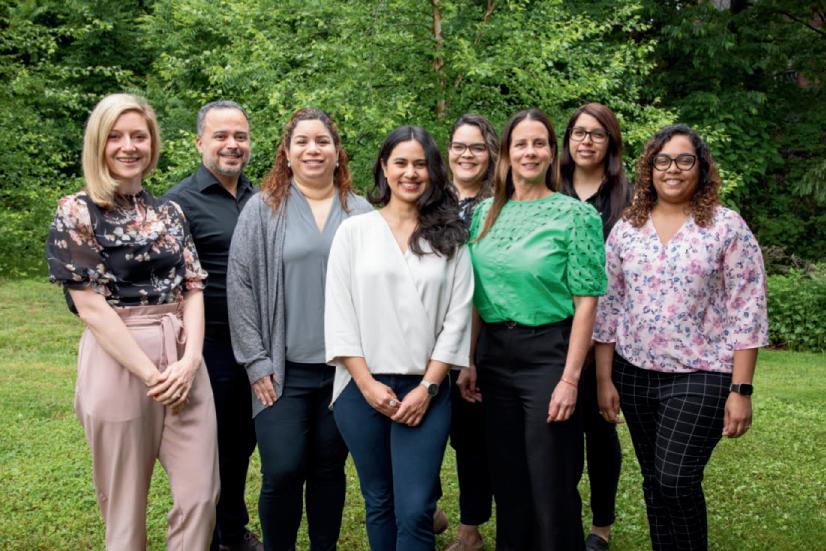


Arecent analysis from the Agency for Research on Cancer and collaborators estimated that 3.2 million new cases of breast cancer will be diagnosed annually across the globe by 2050. That would mark a significant increase in annual cases since 2022, when the World Health Organization reported 2.3 million individuals were diagnosed with breast cancer. Though breast cancer affects millions of women and their support networks each year, it’s not always so easy to understand all of the terminology surrounding the disease. With that in mind, people recently diagnosed with the disease or those who know someone in such a position can learn these common terms to make their journey to recovery a little easier to navigate.
Ductal carcinoma in situ (DCIS):
Many terms related to breast cancer can be scary, but DCIS is among the more welcoming words a doctor may utter. DCIS is a non-invasive form of breast cancer that doctors may characterize as “stage 0.” Breast cancers identified as DCIS are very early stage and highly treatable.
Invasive ductal carcinoma (IDC):
Susan G. Komen®, an organization dedicated to raising breast cancer awareness, notes that IDC is a form of the disease that begins in the milk ducts but has spread into surrounding breast tissue and possibly into the lymph nodes or other parts of the body.
Lumpectomy:
According to Susan G. Komen®, a lumpectomy is a surgical



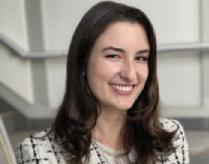
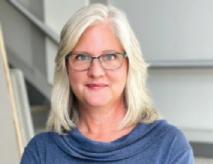
procedure that removes only the tumor and a small amount of tissue around it. Most of the breast skin and tissue is left in place during a lumpectomy.
Mastectomy:
A mastectomy is a surgical removal of the breast. Susan G. Komen® notes there are different types of mastectomy. A modified radical mastectomy removes the breast, the lining of the chest muscles and some of the lymph nodes in the underarm area. This procedure is used to treat early and local advanced breast cancer. A total mastectomy involves surgical removal of the breast but no other tissue or nodes.
Hormone receptor status:
Hormone receptor status indicates whether or not a breast cancer requires hormones to grow. Susan G. Komen® notes a significant number of hormone receptors on a breast cancer cell indicate it needs the hormone to grow.
Family history:
Family history refers to current and past health conditions of a given individual’s biological family members. Family history of breast cancer is considered a risk factor for the disease.
Ki-67 Rate:
Susan G. Komen® notes this is a common way to measure proliferation rate. The more cells the Ki-67 antibody attaches to in a given tissue sample, the more likely the tumor cells will grow and divide rapidly.
Local treatment:
This refers to treatment that focuses on removing cancer from areas local to the breast, including the breast itself as well as the chest wall and lymph nodes in the underarm area. These are just a handful of terms that women diagnosed with breast cancer and their family members can learn to better understand the disease and the various ways it’s treated. Additional terminology can be found at komen.org.
By R ebecca Robbins
The New York Times
The cancer medication Keytruda is the world’s bestselling drug. But with lower-priced competition set to arrive as soon as 2028, Keytruda’s manufacturer, Merck, is on the brink of losing tens of billions of dollars in sales.
To keep Keytruda revenue flowing, Merck followed a well-worn playbook. It developed a new version of the drug, given as a shot under the skin, which the Food and Drug Administration approved this September.
The company is talking up the new version as quicker and easier for patients than the original therapy, which is given through tubes as an intravenous infusion.
Keytruda is approved to treat 18 types of cancer, including of the skin, lung, breast and colon. It has been given to 2.9 million patients and helped former President Jimmy Carter extend his life by nearly a decade. Since arriving in 2014, Keytruda has generated $146 billion in sales for Merck. The drug accounts for nearly half of Merck’s revenue.
Government-funded programs like Medicare cover much of the cost of the cancer drug, which has a sticker price of about $204,000 a year. Merck said the price for the new shot version will be similar; the company plans to announce the exact price later this month.
Company executives have said they plan to debut the shot, Keytruda Qlex, this fall and expect up to 40% of Keytruda users to be on it by 2027. Dr. Marjorie Green, an executive at Merck, called the new version “a meaningful advance” and said the company developed it “to address patient and provider needs and help simplify the treatment experience.”
Drug pricing experts say that Merck’s new shot will most likely slow the adoption of cheaper copycat infusions, keeping prices higher for longer at the expense of Americans who pay in the form of taxes and health insurance premiums.
When strategies like Merck’s succeed, the result is that “we’re all spending billions more dollars on prescription drugs,” said Dr. Benjamin
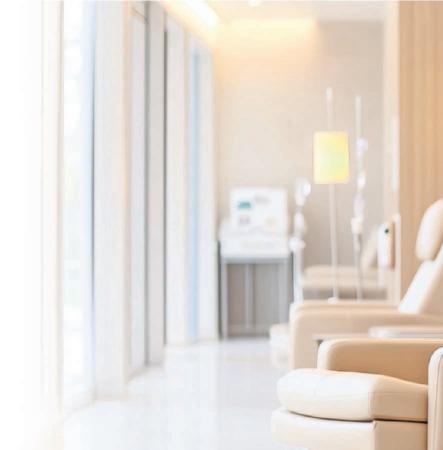
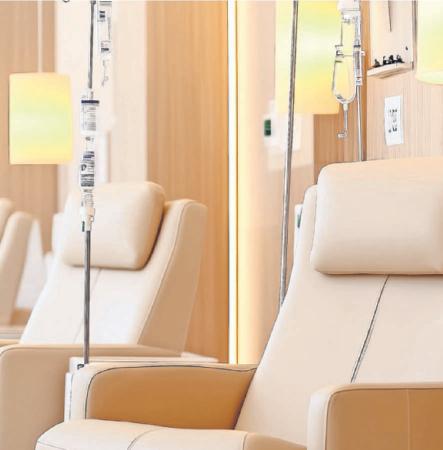

Rome, a health policy researcher at Brigham and Women’s Hospital in Boston.
There are difficult tradeoffs. Many patients prefer quick shots over slow infusions. “But we probably don’t want to be paying so much for these small additions on the tail end of a product that has already made billions of dollars,” Rome said.
Sens. Elizabeth Warren, D-Mass., and Bernie Sanders, I-Vt., have accused Merck of abusing the patent system with the new Keytruda shot. Merck is just the latest in a long line of drug companies that have introduced new versions of their medicines that allow them to keep charging high prices even as their original patents expire.
The strategy is known as a product “hop.” A company rides out its monopoly on the original drug, and then, a few years before competition reaches the market, the drugmaker “hops” to a new version that remains protected by patents. For example, AbbVie reformulated its blockbuster drug Humira, used for conditions like arthritis, to make it less painful and
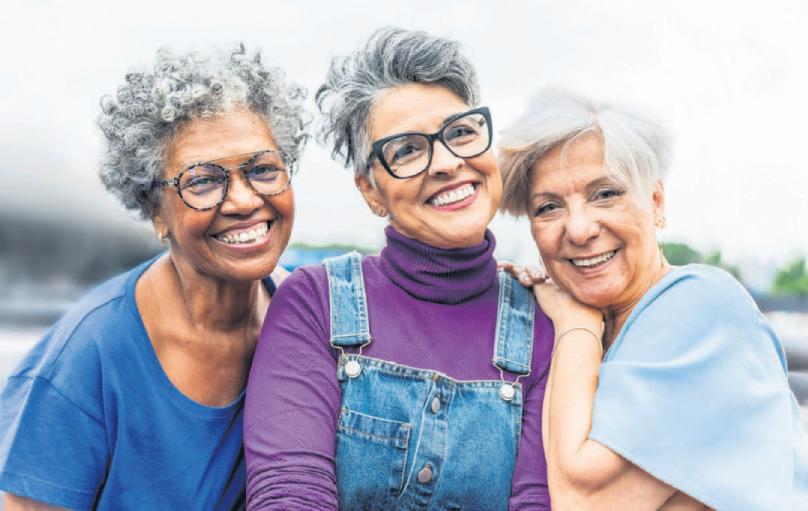

faster to inject. (AbbVie has denied engaging in product “hopping.”)
The changes generally do not improve the metrics patients care about most: safety and effectiveness.
“The industry has come up with this perfect strategy of selling convenience as opposed to something therapeutically better,” said Tahir Amin, CEO of the Initiative for Medicines, Access & Knowledge, or I-MAK, a nonprofit that tracks drug patents.
In the past several years, drugmakers have carried out product hops for a handful of expensive and widely used cancer drugs, like Herceptin, Darzalex and Opdivo. The tweaked versions use an ingredient known as hyaluronidase that breaks down the drug and allows it to be quickly injected under the skin.
Medicare has spent billions of dollars paying for the shot versions for tens of thousands of cancer patients. Prices for the new shots have been similar to those of the original infusions but higher than the copycat infusions introduced by competitors.
The new injections have
proved popular with hospitals because they free up infusion chairs for patients receiving chemotherapy and allow them to treat more patients.
“That’s a huge incentive to switch if you can,” said Stacie Dusetzina, a drug pricing expert at Vanderbilt University.
The time savings can be significant. In a clinical trial funded by Merck, the Keytruda shot, injected into the stomach area or thigh, took about two minutes to administer, compared with 30 minutes for the original infusion. Patients getting the shot spent just over an hour in the treatment room, compared with over two hours for the infusion. Either way, patients get the drug every three or six weeks.
Both ways of giving the drug can cause side effects like reactions and pain, though they are usually not serious.
Merck has sought nearly 300 patents related to Keytruda, according to I-MAK. (Merck disputed I-MAK’s count but declined to provide a different figure.) Some of those patents might give Merck leverage to block the arrival of copycat infusions from competitors for

years beyond 2028, when the drug’s core patents expire. Merck is banking on the fact that many patients will already be receiving the convenient shot by the time that cheaper versions are available, and they would be unlikely to switch back to a slow infusion. Oncologists say they are focused on what is best for their patients, not on what will minimize Medicare’s longterm cost.
The original version of Keytruda had been expected to have its price cut for Medicare starting in 2028, under a Biden-era law subjecting certain medicines to price negotiations. But in a win for Merck, the Republican policy bill that became law this summer delayed that timetable by one year for Keytruda because of a change in the way it dealt with products originally approved for rare diseases. It is not clear whether the Medicare price cut starting in 2029 will also apply to the new Keytruda shot; the federal government recently hinted that it might.

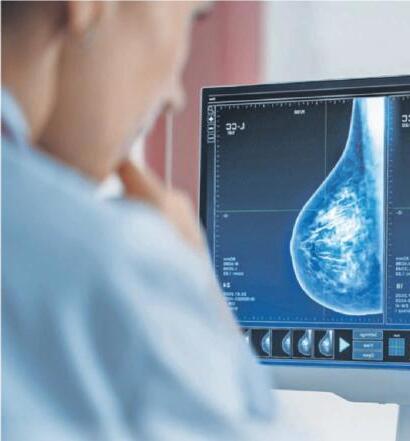
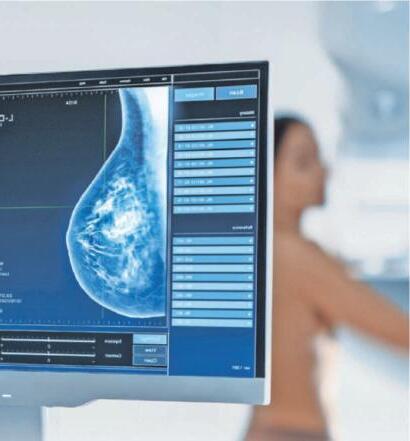



Health care screenings save untold numbers of lives each year. Screenings can uncover potentially life-threatening issues in their infancy. Such is often the case with cancer screenings, which are recommended to adults from all walks of life in an effort to detect the presence of the disease in its earliest, most treatable stages.
Screening can detect various forms of cancer, including breast cancer. Breast cancer screening guidelines are fluid as researchers and other health care professionals learn more about the disease. The following guidelines reflect recommendations from the United States Preventive Services Task Force (USPSTF) in 2024.
● Women are now advised to start regular mammograms at age 40. Prior to these updated
USPSTF recommendations, women had been advised to start regular mammograms at age 50. But the Breast Cancer Research Foundation notes these new USPSTF guidelines now align with recommendations from other organizations.
● Screening mammograms should be scheduled every other year between the ages of 40 and 74. This timeline does not align with other organizations, many of which urge women to get annual mammograms. Women can discuss mammogram frequency with their physicians.
● The USPSTF cited a need for more research into the benefits of breast ultrasound and MRI for women with dense breasts. Women identified as having dense breasts can open a dialogue with their physicians about breast cancer screenings and
request updates on the latest opinions surrounding breast ultrasounds and MRIs.
● The USPSTF acknowledged it was unable to make specific recommendations regarding breast cancer screenings for women 75 and older, citing a lack of sufficient studies on which to base recommendations to women in this age group.
It’s important to note that USPSTF recommendations are fluid and can change. Women are urged to take USPSTF recommendations and advice from other organizations into consideration and work in concert with their health care team to identify the best screening strategy for them. More information about breast cancer screening is available at bcrf.org and uspreventiveservicestaskforce.org.
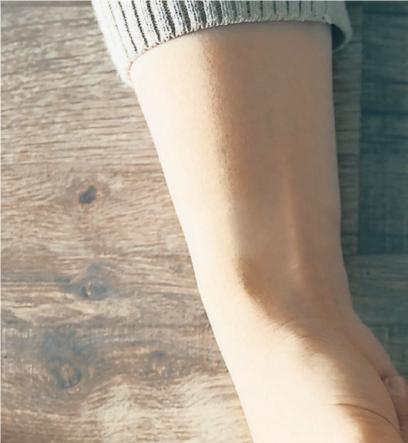
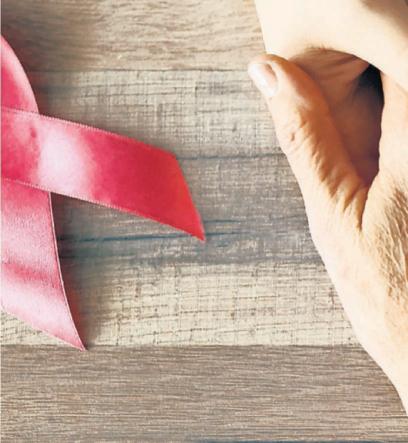

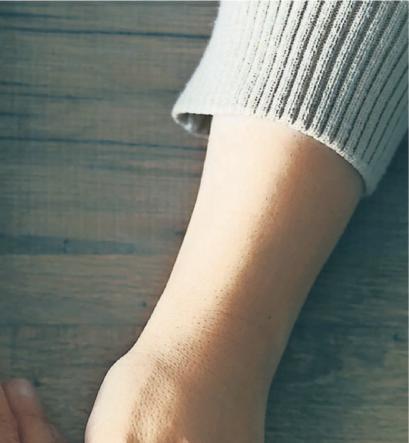
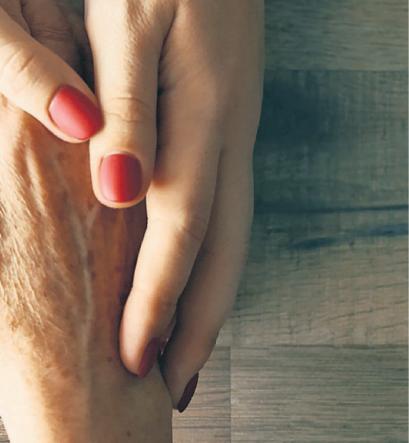

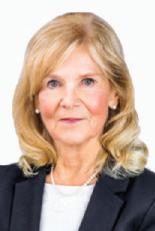



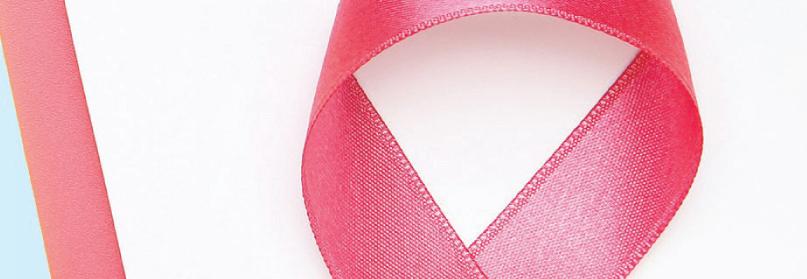
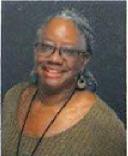



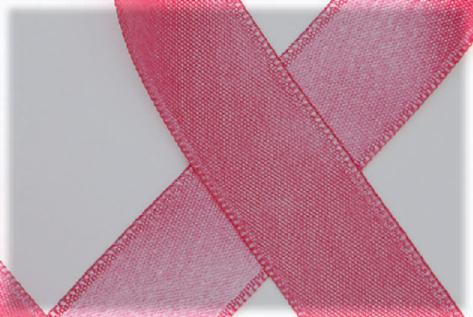

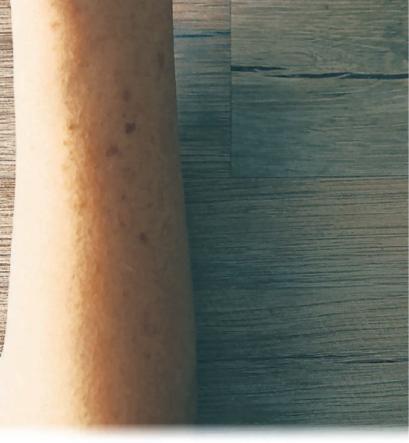
Breast cancer remains a formidable foe, but the tireless efforts of researchers and organizations that raise awareness of the disease have helped improve the prognosis for millions of women across the globe. Thanks to those efforts, the American Cancer Society can report the fiveyear survival rate for localized breast cancers is now greater than 99 percent.
While the vast majority of women with breast cancer are diagnosed when the disease is in its earliest and most treatable stages, some develop metastatic breast cancer, which is an advanced form of the disease.
The National Breast Cancer Foundation, Inc. notes that “metastatic” is a medical term used to define the process by which cancer cells spread to other parts of the body. Metastatic breast cancer occurs when breast cancer cells spread to other parts of the body beyond the breast and nearby lymph nodes.
Which stage is metastatic breast cancer?
cancer has spread and, if so, how far. The earliest stage breast cancer is stage 0, and the most advanced stage is stage IV. Metastatic breast cancer is considered to be stage IV.
Is there a cure for metastatic breast cancer?
The organization Susan G. Komen®, which advocates for women with breast cancer and supports research into the disease while aiming to raise awareness of it, notes that there currently is no cure for metastatic breast cancer. Treatment for metastatic breast cancer aims to extend life and help women to maintain their quality of life. And while there may be no cure for metastatic breast cancer, Susan G. Komen® notes ongoing clinical trials may provide women with an opportunity to try new treatments. In addition, various studies are currently being conducted in the hopes of improving treatment.
● Unusual or persistent back or neck pain that cannot be explained by an injury or exercise
● Pain in the bones
● Unexplained shortness of breath
● Profound fatigue or malaise
● Headache
● Seizures
● Mood changes
● Difficulty with speech
● Changes with vision
What is life like after a metastatic breast cancer diagnosis?
No two women are the same, so each experience with metastatic breast cancer will be different. However, Susan G. Komen® notes that managing side effects, including controlling pain, is an area of focus when living with metastatic breast cancer. Supportive care aimed at improving quality of life, including tending to the physical, emotional, social, and spiritual needs of a person diagnosed with metastatic breast cancer, also is part of life after a diagnosis.
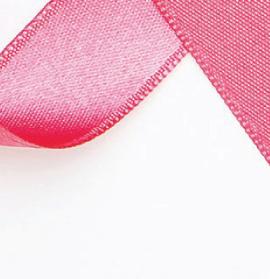

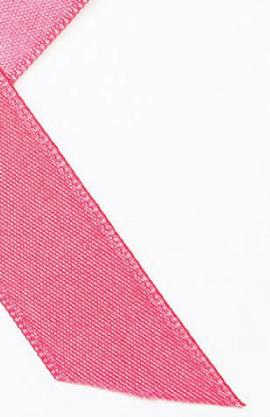
Metastatic breast cancer can indicate recurrence, and women confronting such situations may recall that staging is an important part of confronting the disease. The ACS notes that staging helps doctors identify if the
The NBCF notes that the symptoms of metastatic breast cancer can vary depending on how far the cancer has spread and where in the body it has progressed to. But the experts at Johns Hopkins note women who previously have been treated for breast cancer can keep an eye out for these symptoms that suggest the disease has spread.
Knowledge of metastatic breast cancer can help women and their loved ones navigate the disease more effectively in the event of a diagnosis.

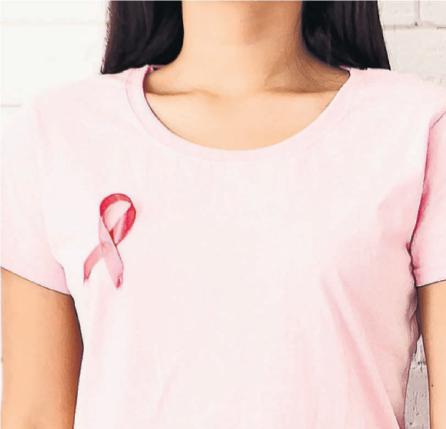

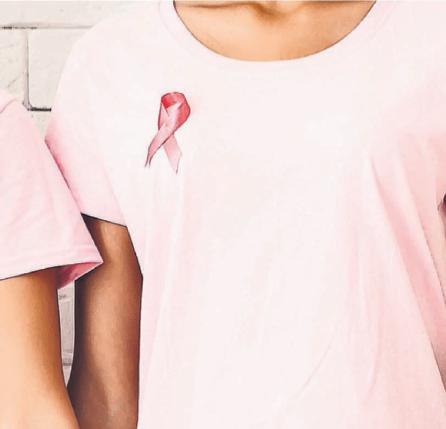
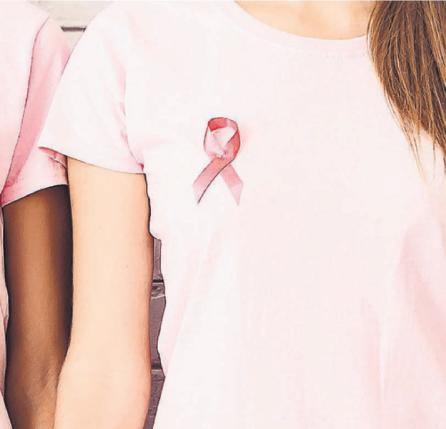





By N The New York Times




Siobhan Donovan was a runner who ate her vegeta bles, didn’t smoke and drank alcohol only socially. She had no family history of cancer. So when she experienced some swelling in her breast near the end of what she called “a textbook-easy pregnancy” with her third child, she and her doctors expected nothing serious.
They were wrong. Donovan, who was 33 at the time, had metastatic breast cancer that had spread to her bones.
“I was really just in shock,” she said, adding that back then she didn’t even know the meaning of the word “metas tasis.”
Like Donovan, a growing number of younger women are being diagnosed with breast cancer, according to new estimates released last week by the American Cancer Society. Between 2012 and 2021, the incidence rate of breast cancer overall increased by about 1% each year, while the incidence rate among women under age 50 increased by about 1.4% each year. Patients with “young-onset breast cancer” — which clinicians typically define as diagnosed before the age of 40 — are more like ly than older patients to have aggressive forms of the dis ease, said Dr. Ann Partridge, interim chair of medical oncology at the Dana-Farber Cancer Institute in Boston.
The increase in breast cancer rates among younger patients is occurring as the incidence of other early-onset cancers — including colorec tal, gastric, kidney and liver cancer — is also on the rise, though cancer among patients under 50 is still relatively rare overall, Partridge said.
In 2024, there were just under 51,000 new invasive breast cancer cases among women under 50, compared with about 260,000 cases among women 50 years of age and older, according to American Cancer Society statistics.
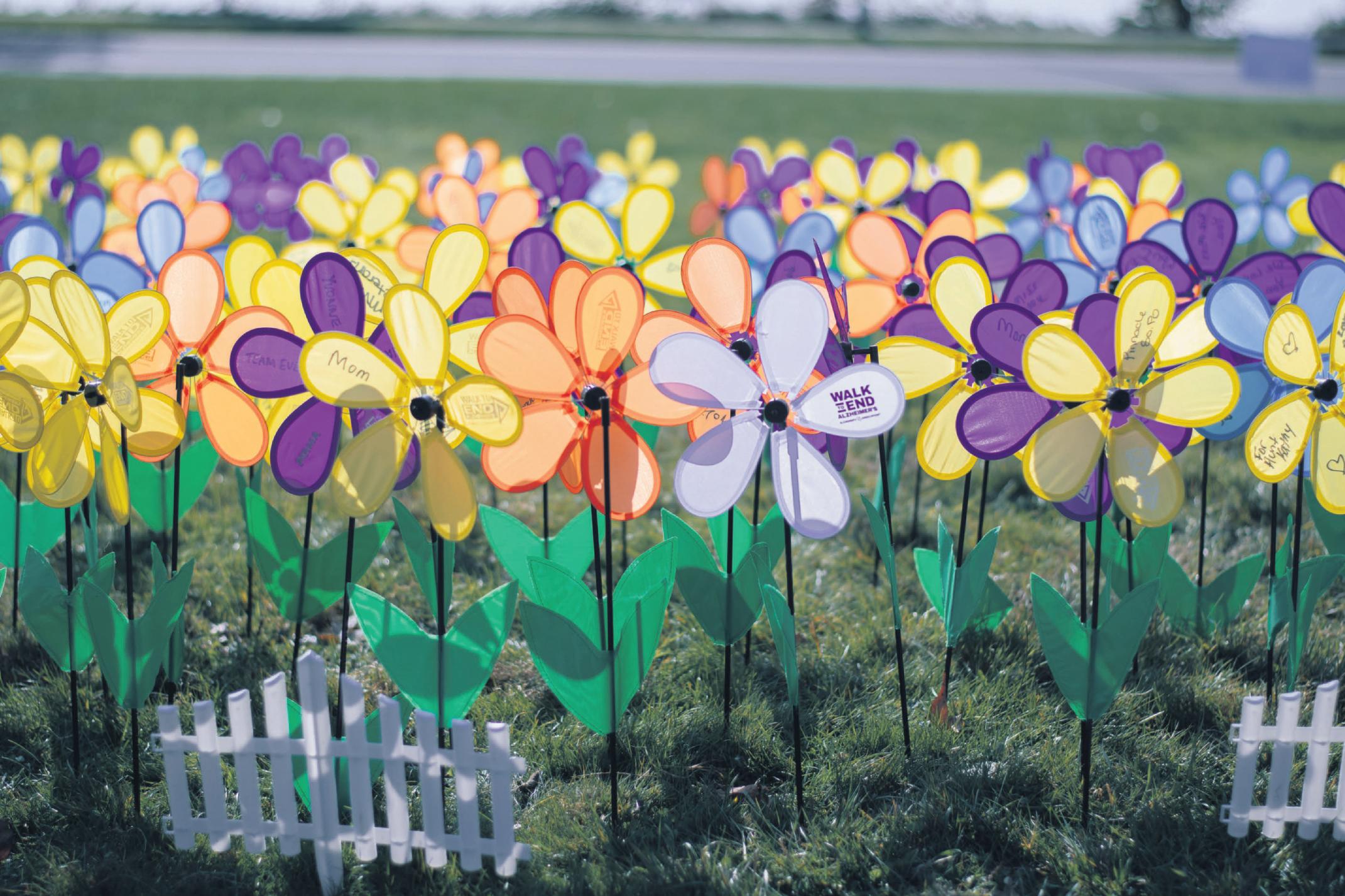
tially contributing to increasing rates of breast cancer across all ages, experts said. For example, the average age at which a girl gets her
“Cancer is a disease of aging,” Partridge said. “But if you’re going to get a cancer in your 30s or 40s, if you’re a woman, it’s most likely to be breast cancer.” Researchers are not certain what is driving the increase in
tially cancer-causing forms of genes like BRCA1 or BRCA2, though such genetic predispositions still only account for a fraction of cancers in this age group.
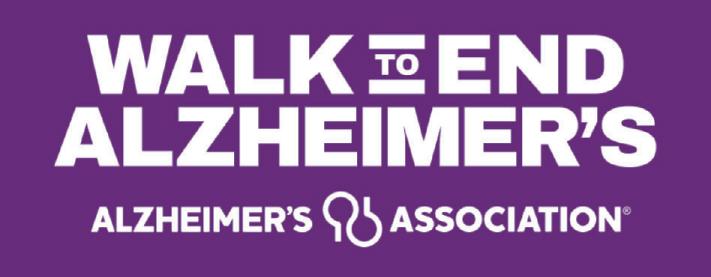
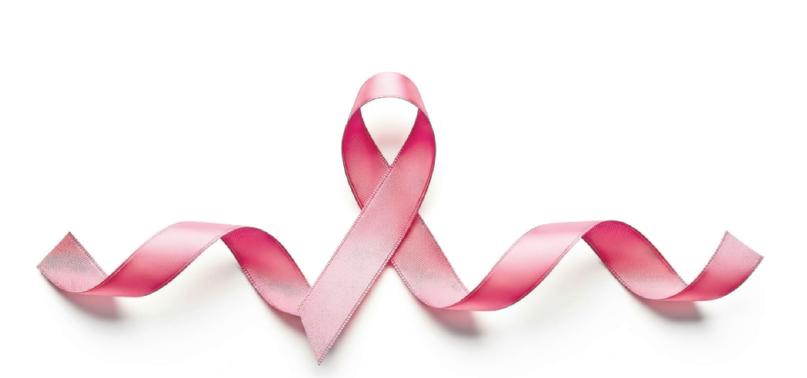
Younger women also are not routinely screened, so by the time they have any symptoms and receive a diagnosis, any tumor is likely to be larger and to be spreading more quickly, Rozenblit said.
















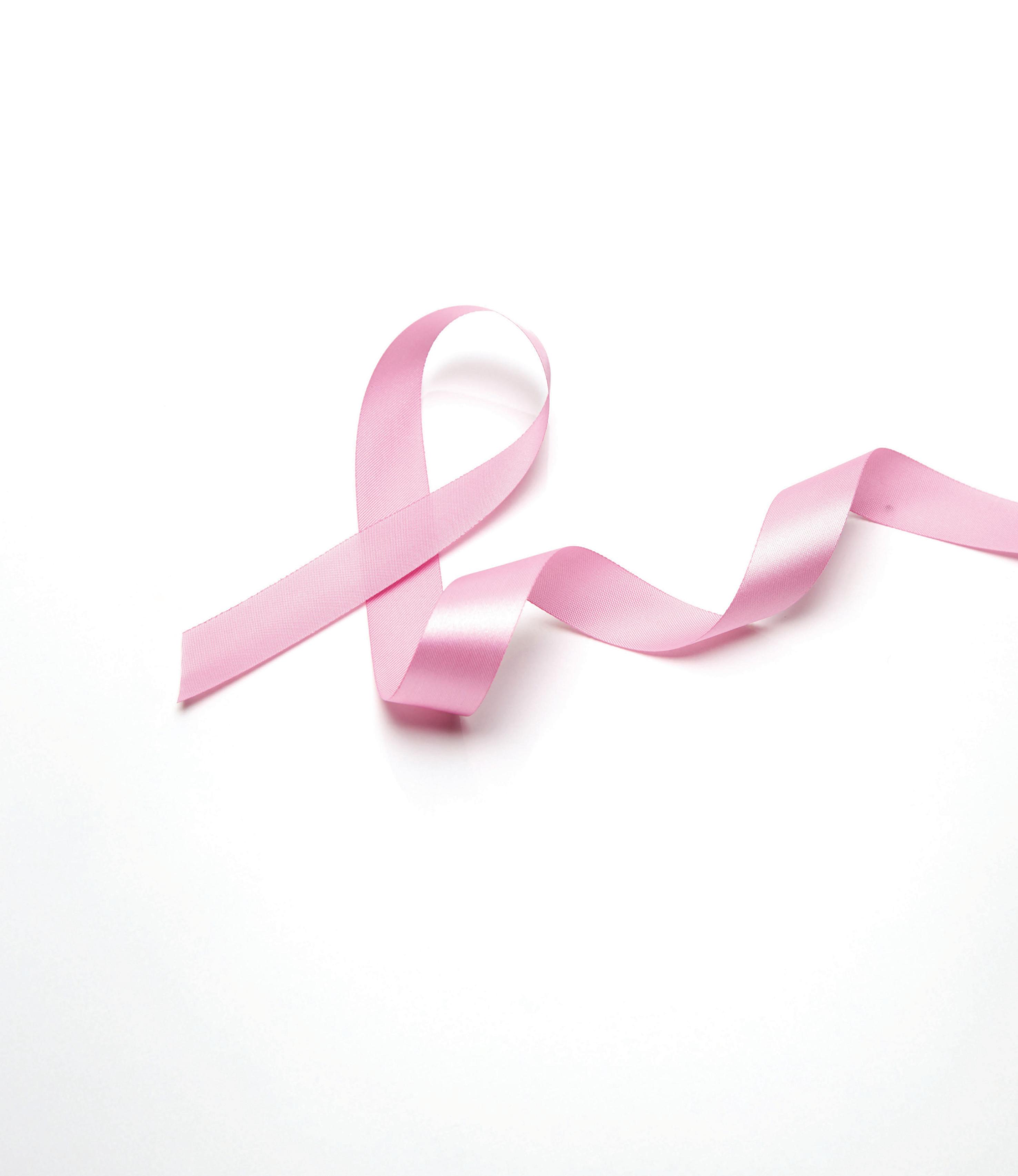
Big Y invites you to donate to our Partners of Hope program to benefit local MA and CT organizations dedicated to Breast Cancer research and treatment.
Please purchase a Partners of Hope Ribbon at any register for only $1.00 now through Oct. 22, 2025 to show your support.